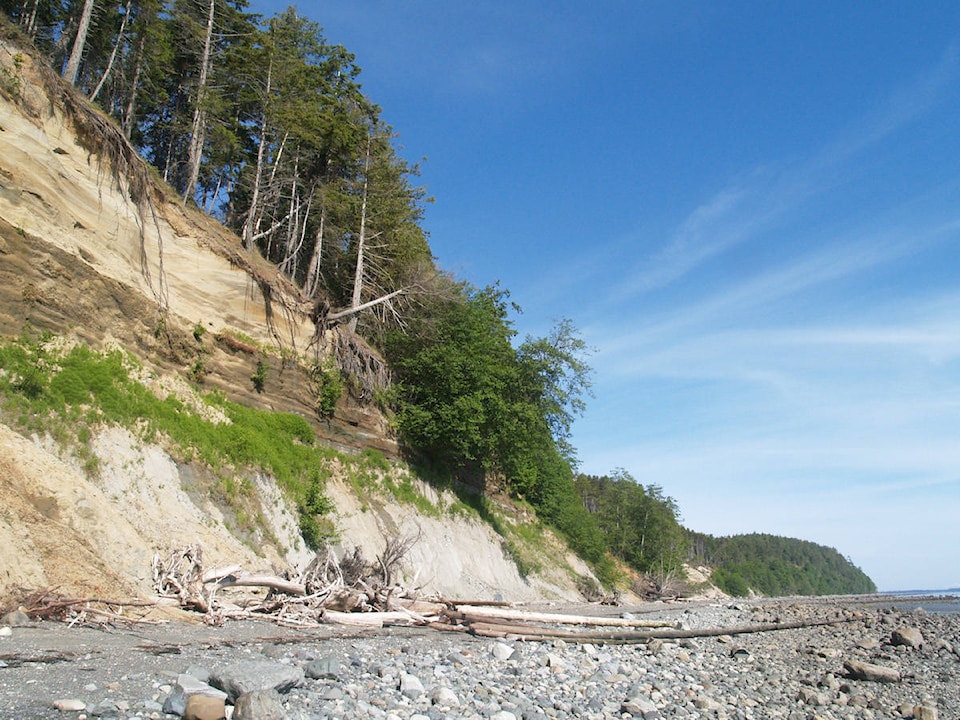The Supreme Court of Canada has dismissed a Denman islander’s application for leave to appeal to question the validity of the bylaws of the Denman Island Local Trust Committee (DILTC), put in place to protect both public safety and property from development on steep, unstable slopes.
In its April 2017 judgment, the Supreme Court of Canada also dismissed Dean Ellis’ application for leave regarding his incomplete development permit applications and awarded costs to the DILTC.
“The Supreme Court of Canada ruling is a welcome relief from a legal issue spanning over a decade, at great cost to both Islands Trust and the taxpayers we serve,” said Peter Luckham, Islands Trust Council Chair.
“The courts have dismissed several applications brought forward by Mr. Ellis and have upheld the validity of the Islands Trust’s bylaws and procedures. In fact, the Supreme Court of British Columbia declared Mr. Ellis a vexatious litigant, which
recognizes that his repetitive lawsuits are an attempt to re-argue matters that have already been considered and decided against him by the courts.”
The Supreme Court of Canada only hears cases that are of public importance and of national interest that warrant a decision from the Court such as challenges under the Constitution Act, Charter of Rights and Freedoms, or a Federal area of responsibility, such as aeronautics.
On Denman Island, an area known as the Komas Bluff is prone to land slips and erosion. In 1988, the DILTC designated a Development Permit Area (DPA) to protect development within the Komas Bluff area from hazardous conditions. Certain activities, such as tree removal, building construction and drainage alteration are only allowed in the Komas Bluff DPA through a development permit issued by the DILTC, with the assistance of advice from a qualified geotechnical expert.
Ellis removed hundreds of trees within the Komas Bluff DPA and caused significant destabilization of the Komas Bluff without a development permit. After exhausting all attempts at a reasonable resolution, the DILTC obtained a court injunction in 2005, prohibiting Ellis from altering land within 50 m of the Komas Bluff on his property without a development permit and requiring Ellis to complete remedial work to the affected area.
Since the court injunction, Ellis has filed numerous proceedings, applications and responses covering a gamut of issues ranging from the validity of the bylaws to the conduct of trustees and Islands Trust staff. The courts have repeatedly found
that the bylaws are valid, and are enacted for proper purposes under the Local Government Act.
Ellis paid over $90,000 to the Islands Trust to satisfy the court ordered sale of his Denman Island property and to satisfy two earlier judgments obtained against him by the DILTC regarding costs owing in the original enforcement proceedings. Several judgments obtained against Ellis by the DILTC, mainly in relation to costs in the judicial review proceedings relating to his incomplete development permit applications, remain on title to his property.
“Public safety is a top priority for local governments, and as the local trust committee responsible for land use planning decisions, our actions are focused on protecting the safety and security of our communities,”said Susan Morrison, Chair of the Denman Island Local Trust Committee. “Courts are the last resort once repeated attempts at voluntary compliance are no longer effective, and where lack of compliance puts public and property safety at risk.”
